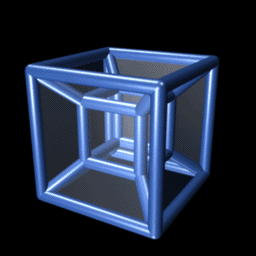
Back فضاء رباعي الأبعاد Arabic Четвърто измерение Bulgarian চতুর্মাত্রিক ক্ষেত্র Bengali/Bangla Quarta dimensió Catalan Čtvrtý rozměr Czech Тăватă хапаллă уçлăх CV Gofod pedwar dimensiwn Welsh 4D German Kvara dimensio Esperanto Cuarta dimensión Spanish
This article needs additional citations for verification. (December 2016) |
| Geometry |
|---|
 |
| Geometers |
Four-dimensional space (4D) is the mathematical extension of the concept of three-dimensional space (3D). Three-dimensional space is the simplest possible abstraction of the observation that one needs only three numbers, called dimensions, to describe the sizes or locations of objects in the everyday world. This concept of ordinary space is called Euclidean space because it corresponds to Euclid's geometry, which was originally abstracted from the spatial experiences of everyday life.
Single locations in Euclidean 4D space can be given as vectors or 4-tuples, i.e., as ordered lists of numbers such as (x, y, z, w). For example, the volume of a rectangular box is found by measuring and multiplying its length, width, and height (often labeled x, y, and z). It is only when such locations are linked together into more complicated shapes that the full richness and geometric complexity of 4D spaces emerge. A hint of that complexity can be seen in the accompanying 2D animation of one of the simplest possible regular 4D objects, the tesseract, which is analogous to the 3D cube.
© MMXXIII Rich X Search. We shall prevail. All rights reserved. Rich X Search

